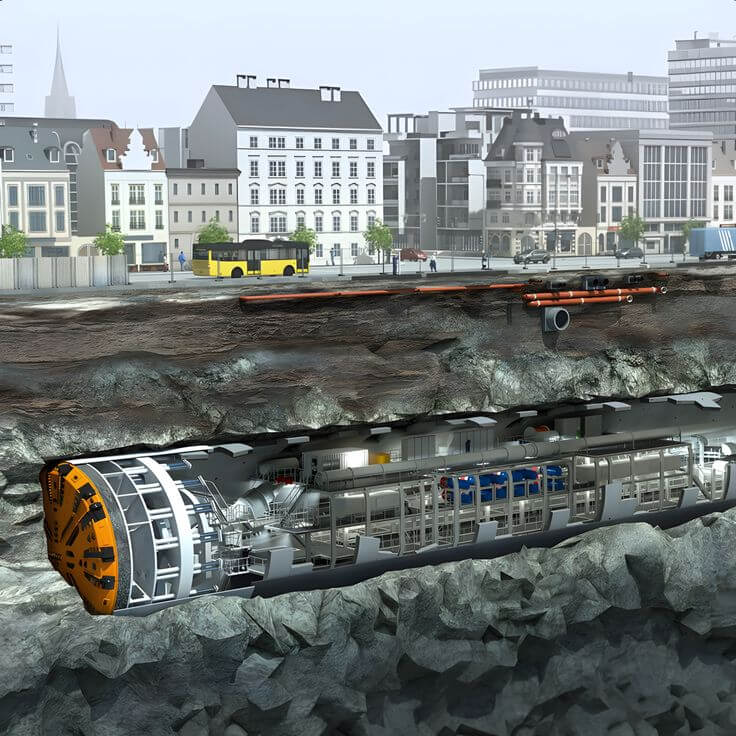
Shocking Simulations Shows How Asteroid That Might Strike Earth Could Destroy Cities
See how your city would fare at the brunt of 90m asteroid 2024 YR4.
By: Ellie Kemp | UNILAD
An incredible simulation has shown exactly what would happen if a ‘city killer’ asteroid was to hit Earth.
That’s right, a space rock the size of the Statue of Liberty is heading for our planet, although there’s only a 2.3% chance of it colliding with us.
But when you hear that that probability has almost doubled from 1.2% in the space of a month, well… that is pretty worrying.
NASA’s Planetary Defence details Asteroid 2024 YR4 as ‘currently’ measuring an estimated ‘130-300 feet across’ – so up to 90 meters.

And it could impact our planet at a high velocity, of roughly 17 kilometres per second – or about 38,000 mph – the space agency warned.
Now, a simulation allows you to see what would happen if it smashed into any city in the entire world.
And the results are pretty terrifying…
What If YR4 Hit The US?

If the 90m asteroid hit Washington DC in the US at 17 km/s at a 45 degree angle, it would be pretty devastating…
When we tried the simulation website Asteroid Launcher, it told us the impact would create a 978km wide crater, roughly 208 meters deep.
Fourteen people would be vaporized in the process, and it only gets worse from then on out really.
The asteroid would trigger a 228 decibel shock wave – that’s louder than standing next to a military jet during take-off.
An estimated 13,395 people would die from this. Those who survive would be living with some grim consequences.
People within 2.2 km would likely receive lung damage, while those 2.9 km away would have their eardrums ruptured.
The website also claims buildings within 5km of the impact site would be destroyed.

The asteroid’s wind speed would be even more deadly, though.
An estimated 90,469 people would die from the 2 km/s wind blast.
And wind within 1.5 km would be faster than the storms on Jupiter – you wouldn’t like to be at the centre of that now, would you?
Any homes within a 2.5 km radius would be completely levelled.
You can take a look out how the asteroid could destroy your own city here.
Coder Neil Agarwhal is the brains behind Asteroid Launcher. He ‘based the app on several scientists’ academic work aimed at calculating the effects of an asteroid impact,’ Space.com reports.
It’s similar to Nukemap, designed by science historian Alex Wellerstein in 2012, which recreates the impacts of dropping a nuclear weapon anywhere in the world.
* * *
NEXT UP!
In travel news this week: the Comedy Wildlife Photography Awards, why you shouldn’t gift-wrap methamphetamine, plus infrastructure megaprojects around the world.
Bridge & Tunnel Crowd

There’s been a whole bunch of international infrastructure projects in the news this week, with a strong focus on digging.
Busy beavers and merry moles have been chattering about resurfaced plans for a $20 trillion transatlantic tunnel that could theoretically link London and New York in just an hour using vacuum tube technology. That’s 3,000 miles of burrowing, mind, which Newsweek estimates could take the best part of a millennium if construction proceeded at the same rate as Europe’s Channel Tunnel.
In plans that are actually happening, Norway broke ground last month on its Rogfast project, which promises to be the world’s longest, deepest undersea road tunnel. Elsewhere in northern Europe, the world’s longest road and rail tunnel, the Fehmarnbelt Tunnel between Denmark and Germany, is slated to open in 2029.
Southern Europe isn’t shy of a project or two, either. Construction of a new bridge linking Greece and Turkey might be closer to getting underway, the Greek Reporter said Friday.
Over ne western end of Europe, the UK is busy building one of the world’s most expensive railway projects, known as HS2 (High Speed 2), which now costs an almighty $416 million per mile. However, many people think it’s pointless.
* * *
Telegram: Stay connected and get the latest updates by following us on Telegram!
We’d love to hear from you! If you have a comment about this article or if you have a tip for a future Collective Spark Story please let us know below in the comment section.


The END or What???